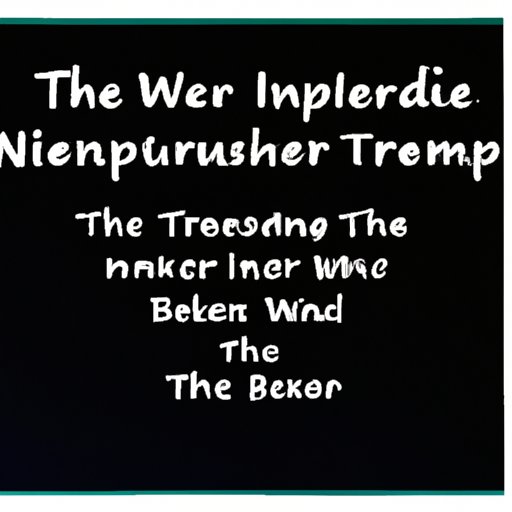Introduction
Creative stories are works of fiction that contain elements of imagination, originality, and artistry. These stories can be used to explore themes, express emotions, and provide entertainment. Writing a creative story requires skill and practice, as well as an understanding of the key elements that make up a good story. This article will provide tips on how to write a creative story, from identifying what makes a character compelling to incorporating surprise elements.

Start with a compelling character and a vivid setting
The first step in writing a creative story is to create a compelling character and a vivid setting. A compelling character is one who readers can relate to and sympathize with; they should have unique qualities and motivations that draw readers in. To create a compelling character, consider their background, goals, and personality traits. It’s also important to think about how they interact with other characters and their environment.
In addition to a compelling character, it’s important to create a vivid setting. The setting should be described in detail so that readers can imagine themselves in the story. Consider the time period, geography, and culture of the setting, as well as its weather, architecture, and any other interesting features.
Outline the story’s plot and structure
Once you’ve created a compelling character and a vivid setting, you’ll need to decide on the main conflict of the story. This is the problem or challenge that your protagonist must overcome. Once you’ve identified the main conflict, you can then begin to outline the plot. Plot points to consider include rising action, climax, and resolution. You’ll also need to decide on the story’s structure, such as linear or non-linear.

Use sensory details to create an immersive experience
In order to make the story come alive, it’s important to incorporate sensory details. These are details that evoke the five senses: sight, sound, smell, taste, and touch. Examples of sensory details include the sound of birds chirping, the scent of fresh-baked bread, or the feel of sand between your toes. Incorporating these types of details into the story will help to create an immersive experience for readers.
Make use of figurative language to add flair
Using figurative language is another way to add interest and creativity to your story. Figurative language includes metaphors, similes, and personification. By using these techniques, you can add more depth and emotion to your story. For example, instead of saying “The sky was blue,” you could say “The sky was a sapphire ocean.” This type of language can help to bring your story to life.

Incorporate unexpected twists and turns to keep readers engaged
Adding unexpected twists and turns to your story can help to keep readers engaged. These surprises can take many forms, such as unexpected character revelations or plot twists. When adding these elements to your story, it’s important to make sure that they are believable and that they fit within the context of the story.
Conclusion
Writing a creative story requires skill and practice, but with the right knowledge and techniques, anyone can do it. In this article, we discussed how to write a creative story, from creating a compelling character and a vivid setting to making use of figurative language and incorporating unexpected twists. By following these tips, you can create a unique and captivating story that your readers will love.
(Note: Is this article not meeting your expectations? Do you have knowledge or insights to share? Unlock new opportunities and expand your reach by joining our authors team. Click Registration to join us and share your expertise with our readers.)
